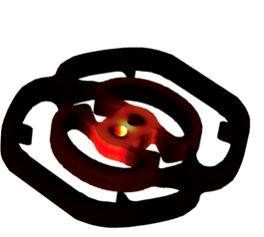16.03.21 - Semiconductor nanolasers
Jesper Mørk (Technical University of Denmark)
Zoom Link: https://zoom.us/j/97579804919
ID: 975 7980 4919
Password: HzF2

Semiconductor micro and nanolasers are of practical importance for integrated photonics as well as emerging quantum technology. At the same time, they are an excellent playground for the study and exploration of light-matter
interaction in nanostructures. In this talk, I will discuss a few emerging topics within nanolasers. The first topic is semiconductor Fano lasers, where the laser mode is based on a bound-state-in-the-continuum exploiting Fano interference [1]. Such lasers have a number of intriguing properties, including passive pulse generation, ultra-high modulation bandwidth, reduction of quantum noise and increased stability towards optical feedback [2]. Secondly, a new possibility of confining an optical mode far below the diffraction
limit and its possible application to nanolasers and nanoLEDs will be discussed. This may offer the possibility of realizing intensity-noise squeezing in a large bandwidth [3]. The analysis of such extreme lasers demand a detailed account of Purcell effects, and it becomes important to understand whether lasers with near-unity spontaneous emission factor actually lower the quantum noise or rather increase it [4].
[1] Y. Yu, W. Q. Xue, E. Semenova, K. Yvind and J. Mork, "Demonstration of a self-pulsing photonic crystal Fano laser," Nature Photon. 11, 81 (2017).
[2] T. S. Rasmussen, Y. Yu, Y., and J. Mork, "Suppression of Coherence Collapse in Semiconductor Fano Lasers," Phys. Rev. Lett. 123, 233904 (2019).
[3] J. Mork and K. Yvind, "Squeezing of intensity noise in nanolasers and nanoLEDs with extreme dielectric confinement," Optica 7, 1641 (2020).
[4] J. Mork and G. L. Lippi, "Rate equation description of quantum noise in nanolasers with few emitters," Appl. Phys. Lett., 112, 141103 (2018).